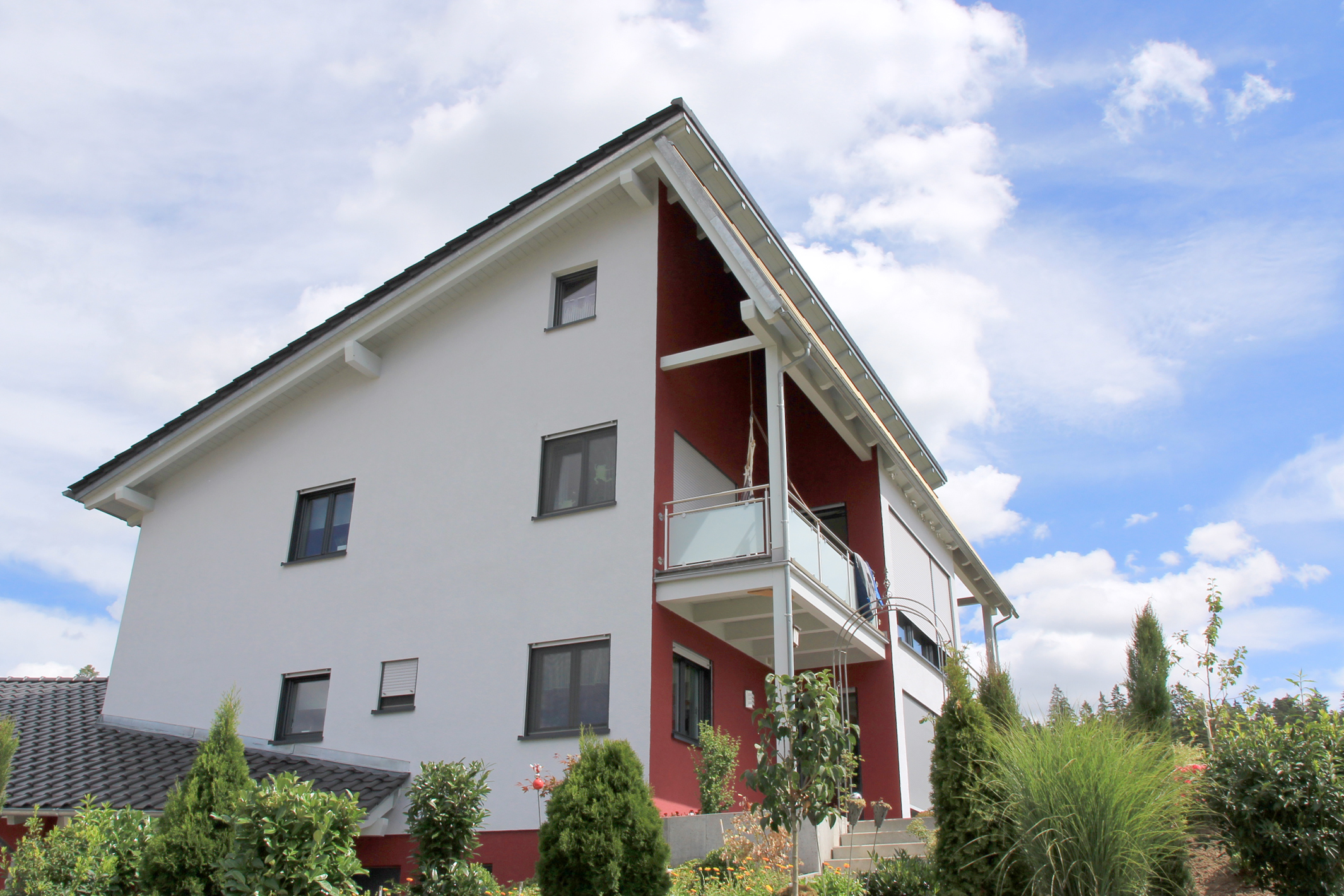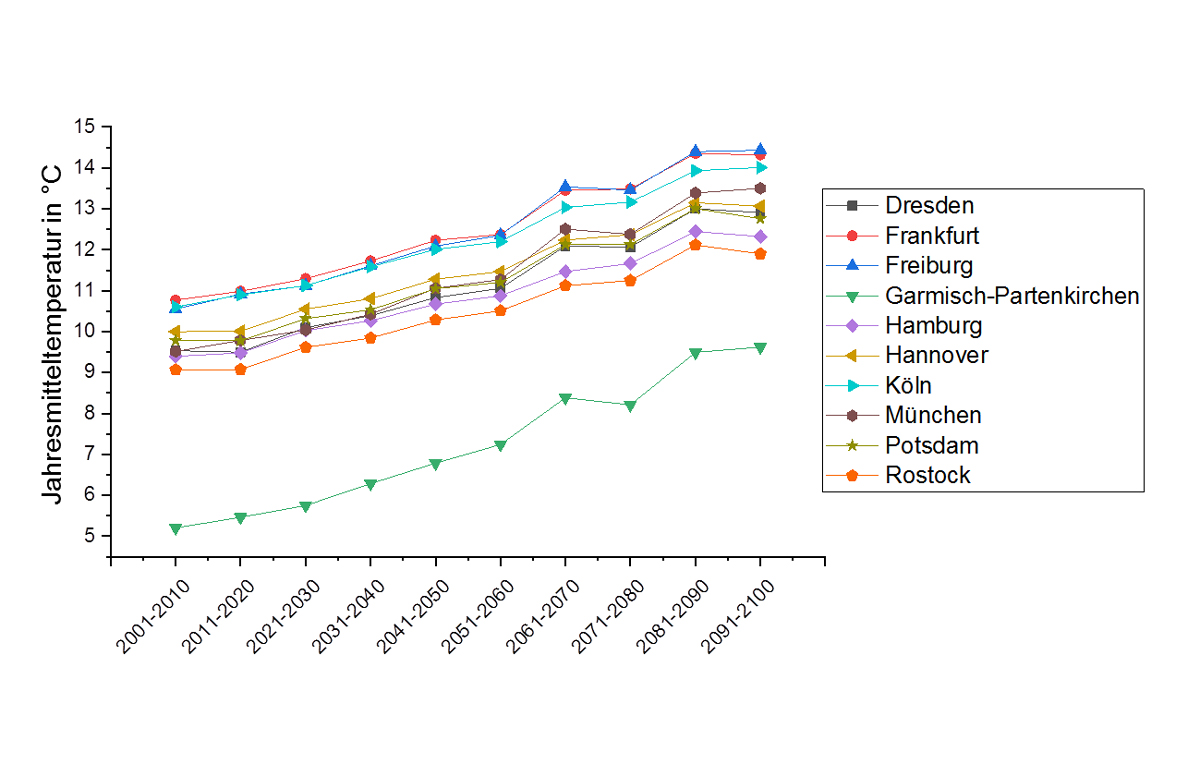Press release
Fraunhofer WKI simulates timber construction in climate change: Timber buildings withstand global warming
Wooden buildings withstand climate change and help bind CO2. This is the result of a study carried out by the Fraunhofer Institute for Wood Research, Wilhelm-Klauditz-Institut WKI together with the Holzbau Deutschland-Institut. Based on current climate forecasts, no physical damage to timber buildings is to be expected today or in the next 100 years. For future construction planning, the researchers have also developed recommendations for protection against heat, wood pests and extreme weather events such as storms and heavy rain.


With a record heat wave in July 2019 and the warmest June since weather records began, the question arises as to what adjustments to our lifestyles might become necessary as a result of climate change. For example, will buildings have to be built differently in the future? Does it make sense to build with wood even under the predicted climatic conditions? Researchers at Fraunhofer WKI have therefore investigated whether the wooden buildings constructed today can withstand the future effects of climate change.
“We have analysed the serviceability of timber buildings in Germany, taking into account the forecast climatic conditions up to the year 2115, and have come to the conclusion that climate changes have no negative effects on timber construction,“ summarises project manager Norbert Rüther. Thus, good and lasting future prospects are given for building with wood. Buildings made of masonry, steel and concrete are very durable, but finite resources such as sand, limestone and iron ore are required for construction. This construction method is also energy-intensive and releases large amounts of CO2 during production and transport. Wood as a building material offers many advantages here, because it is readily available regionally, renewable, recyclable and has a significantly lower energy requirement than conventional building materials. “During its period of use, wood stores CO2 and thus relieves the atmosphere, which is another great advantage of wooden buildings,“ explains Rüther.
In the first project phase, the researchers of the Fraunhofer WKI and the Holzbau Deutschland-Institut defined the framework conditions of the simulations with the help of climate models. This was followed by modelling and simulation of timber construction under climate change conditions. In the third step, recommendations for action for the construction planning and execution were derived from this, which comprise three areas.
“Our recommendation is to include extreme weather events in the construction planning. Storm gusts should be taken into account with respect to wind suction anchoring and heavy rainfall events in relation to rainwater drainage. These aspects affect the entire building industry, not just building with wood,“ explains Rüther.
The researchers' second conclusion concerns summer thermal insulation, which should play a greater role in the planning and construction of buildings and in legal regulations.
The third topic is wood pests: “The rise in temperature and shorter frost periods improve the living conditions for wood-destroying insects such as house longhorn or termites. Species introduced by global trade are also feeling increasingly at home in Europe and so far have no natural enemies. The consequences of a possible future increase in the population of wood pests have not yet been adequately investigated. There is a need for further research in this area,“ summarises Rüther.
The successfully completed research project was funded in the “Forest Climate Fund“ programme of the Federal Ministry of Food and Agriculture (BMEL) by the project executing agency Fachagentur für Nachwachsende Rohstoffe e.V. (FNR).
The scientists at Fraunhofer WKI also contribute their expertise in building with renewable raw materials to other research projects, taking climate change and resource conservation into account. In the research network “More than just insulation - additional benefits of insulating materials made from renewable raw materials (NawaRo insulating materials)“, funded by the Federal Ministry of Food and Agriculture, the Fraunhofer WKI is currently determining basic requirements for insulating buildings with materials made from renewable raw materials and developing material-specific parameters and measuring methods. With these findings, standards and regulations can be adapted to facilitate the use of sustainable insulating materials.
Recently, the project “Development of sustainable insulation materials and building elements for the Chilean market (Susi4Chile)“, funded by the German Federal Ministry of Education and Research (BMBF), was launched at Fraunhofer WKI. The aim of the project is to develop insulating materials from plants native to Chile as well as from largely unused plant “waste“ that accumulates in Chilean agriculture, forestry and timber industry. The Fraunhofer WKI researchers are thus contributing to sustainable forest management and to improving the environmental balance of the construction industry in Chile and opening up new value-added opportunities.
Background
The Fraunhofer WKI has been focusing on sustainability through the use of renewable raw materials for more than 70 years. The institute, with locations in Braunschweig, Hanover and Wolfsburg, specialises in process engineering, natural fibre composites, wood and emission protection, quality assurance of wood products, material and product testing, recycling processes and the use of organic building materials and wood in construction. Almost all processes and materials resulting from research activities are used industrially.
Last modified:
 Fraunhofer Institute for Wood Research
Fraunhofer Institute for Wood Research